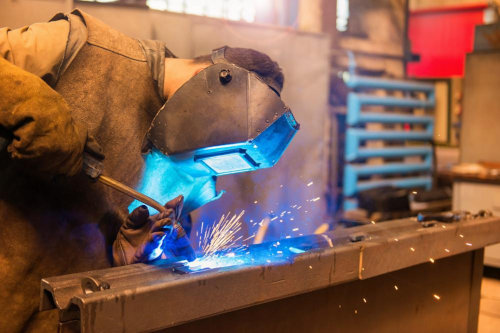
TL;DR
- Prioritizing manufacturing employee safety improves productivity, morale, and regulatory compliance.
- Provide thorough safety training, including correct PPE usage and safe machinery operation.
- Conduct regular equipment maintenance to prevent malfunctions and workplace hazards.
- Enforce vehicle and heavy equipment safety protocols, including speed limits and pedestrian-safe zones.
- Implement clear, visible safety procedures with regular emergency drills for preparedness.
- Foster a safety-first culture to reduce accidents, protect employees, and enhance business performance.
Keeping your manufacturing factory employees safe is crucial for maintaining a productive and efficient work environment. Workplace safety not only reduces the risk of injuries but also boosts employee morale and minimizes costly downtime. By following best practices and implementing safety measures, you can protect your workforce while ensuring compliance with industry regulations.
Below are four best practices that can make a significant difference in the safety and well-being of your employees and ultimately contribute to the success of your business.
Safety Training and PPE Usage
A reputable metal fabricator will include safety training as part of their documented quality control program. This safety training may include: Properly using PPE, such as 3M masks with welder hoods. This type of training equips employees with the necessary knowledge and skills to minimize exposure to hazardous materials, harmful fumes, and other potential dangers.
It also helps prevent common accidents that can occur due to improper handling of machinery or materials. In addition, it’s vital that employees are trained in the correct methods for operating machinery to ensure they are well-prepared for unexpected situations that may arise during the manufacturing process.
By investing in this training, your business can reduce the risk of costly accidents and boost employee productivity.
Regular Equipment Maintenance
According to CarsDirect, three of the most common faulty components that can lead to car vibrations include: universal joints (U-Joints), couplers, and carrier bearings. Regular maintenance and inspections of machinery and equipment are essential to prevent malfunctions that could put employees at risk.
Keeping machines in good working order ensures that potential hazards are identified and dealt with before they cause accidents. Scheduled maintenance can significantly reduce the likelihood of breakdowns and malfunctions that may result in dangerous situations for employees.
For a manufacturing business, this maintenance is a vital part of protecting your bottom line and reducing downtime.
Vehicle and Heavy Equipment Safety
According to Noregon, semi trucks move 10.5 billion tons of freight each year. Just like in the transportation industry, heavy equipment and vehicles are common in manufacturing factories. Proper training on vehicle operation, routine inspections, and safe loading/unloading practices can significantly reduce the risk of accidents caused by these machines.
Always ensure employees follow established safety protocols when operating forklifts, cranes, and other large machinery. It’s also essential to implement speed limits for vehicles inside the facility and designate safe zones for pedestrian traffic to prevent collisions.
Ensuring safety in vehicle operations protects both employees and the business by reducing potential liabilities.
Implementing Clear Safety Procedures
Clear and concise safety procedures should be posted throughout the factory, ensuring all employees are aware of potential risks and how to avoid them. Emergency exits, safety equipment locations, and first aid procedures should be visible and accessible. Make sure employees are aware of who to report safety concerns to and how to take immediate action if an accident occurs.
Conduct regular drills to ensure all employees know the proper evacuation procedures and what to do in case of an emergency, such as a fire, chemical spill, or equipment malfunction. By maintaining clear and organized safety procedures, your business can ensure a smoother and quicker response to any incidents that may arise.
Prioritizing employee safety in a manufacturing environment is essential for both the well-being of your workforce and the overall success of your business. By following these best practices—safety training, equipment maintenance, vehicle safety, clear procedures, fostering a safety-first culture, and investing in safety technology—you can reduce the risk of workplace injuries and create a more productive and compliant factory. These proactive measures not only ensure a safer work environment but also help cultivate a culture of care, responsibility, and respect within the organization.
By placing safety at the forefront, your business can improve both its reputation and its performance in the long term.
FAQ
Why is employee safety important in manufacturing?
Safety reduces workplace injuries, minimizes downtime, boosts morale, and ensures compliance with industry regulations—directly benefiting productivity and profitability.
What role does safety training play in a factory?
Safety training equips employees with the skills to handle machinery, use PPE properly, and respond effectively to hazards, reducing the risk of accidents.
How does regular equipment maintenance improve safety?
Maintenance prevents mechanical failures, identifies hazards early, and ensures machinery operates efficiently, reducing risks for workers.
What are best practices for vehicle and heavy equipment safety?
Train operators, conduct inspections, enforce speed limits, and create safe pedestrian zones to prevent accidents involving forklifts, cranes, and other heavy machinery.
How can clear safety procedures prevent workplace incidents?
Visible instructions, emergency exit maps, and regular drills prepare employees to respond quickly to fires, chemical spills, and other emergencies.


